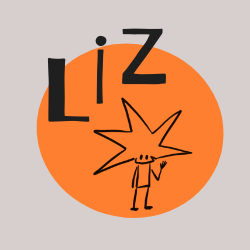I am trying to write more book summaries, overviews of non-fiction I read. To help me engage more deeply with the text as I go over it so I can write about it and help me remember who said what should I need to refer back to things. Hopefully it will be a useful resource for other folks as well.
Creating Short Fiction by Damon Knight was a lovely, well balanced read with a lot of love for the art, the craft and the practicalities of story making. It looks at processes in detail and combines theoretical concepts with practical exercises (20 exercises all up).
A rough outline of the jewels contained within:
Developing Your Talent as a Writer – including exercises to develop sensory detail in writing.
Idea into story – Lots of interesting structural, conceptual stuff, including
- Manipulating an idea, and an anannotated story so that it makes tangible many concepts.
- Structure, natural series and dramatic series
- different sorts of plot – story of resolution, revelation, trick endings, explanation, solution.
- Common plotting faults and what to do about them
- Unplotted Stories
Beginning a Story
- Characters, setting
- Viewpoints, including mixed viewpoints – and the difference between Single Character Subjective and Single Character Objective
Controlling a Story
- Focus. compression
- Pleasure
- Style, Tone. Various exercises
Finishing a Story
- What to do when you’re stuck
- The ending
- Revision
- Writing for a market
- Dealing with Editors
Being a Writer
- Habits, pleasures, pains, frustration, despair, slumps – and a delightful section discussing the values of different typewriters (manual vs electric), writing by hand and that strange emerging beasty, the computer
Further reading
A number of books were listed as valuable for further reading, with a useful paragraph saying why. Of the list, the book that interested me the most was The Creative Process, ed Brewster Ghiselin – essays on the creative processes of different writers, poets, artists, mathematicians, musicians, dancers. etc Einstein said he thought not in words or mathematical symbols, but in kinesthetic sensations.
Some snippets from idea into story:
Damon Knight looked at a few different types of stories and their structures, which was quite interesting – Story of Resolution, Story of Revelation, Trick Endings, Story of Decision, Story of Explanation, Story of Solution. He then went on to write:
Common Plotting Faults and What to Do about Them
1. Symptom: Story line wanders, never seems to get anywhere.
Diagnosis: Author has started writing the story without any clear idea of its direction
Treatment: Give your central character a stronger motivation and make things more difficult for her. Rewrite without looking at the old version
2. Symptom: Story is confusing – too many characters, too much going on.
Diagnosis: Author has not decided whose story this is, or has not found a way to focus the narrative on the central character
Treatment: Arbitrarily reduce the number of principal characters to three or four. Replot and rewrite.
3. Symptom: Plot structure looks complete, but the story seems curiously pointless.
Diagnosis: Author has forgotten that we must care about the chief characters and it must matter what happens to them. Stories like this are often written by young people (usually male) who beleive they have to plot mechanically in order to be published. Even in most popular fiction, in categories where plot is very important, the characters are more important. If you don’t believe in your own characters and feel deeply about them, nobody else will either.
4. Symptom: Ending is disappointing.
Diagnosis: (1) Author has failed to misdirect the reader – the ending is disappointing because it is obvious: or (2) author has failed to plan ahead for the ending, hoping something would turn up, and in despair has tacked on a weak, irrelevant, or illogical ending.
Treatment: It is useless to treat the ending by itself: any tacked-on ending will look tacked-on. Go back to the opening situation and replot.
Unplotted stories
In these stories we are profoundly moved, not by drama, but by the inner meaning of a human being’s existence. These are stories of illumination than revelation, “This is what life is.”
A very fine book indeed, with clarity, good humor, a love for the form and eminent re-readability.

Leave a Reply to LizCancel reply